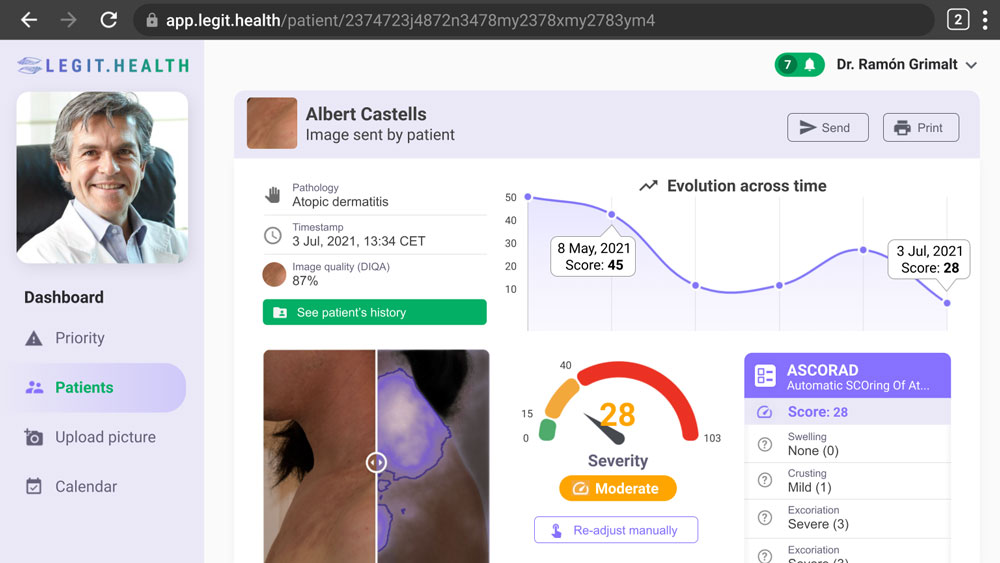ASCORAD: The Next-Generation Atopic Dermatitis automatic scoring system
Introduction
Legit.Health proudly introduces a significant advancement in dermatological assessments: the ASCORAD (Automatic SCORing Atopic Dermatitis) system. This innovative tool leverages advanced computer vision algorithms to analyze images captured by smartphones and automatically align them with the SCORAD scoring system.

The ASCORAD has been recognized and validated in multiple scientific publications. A comprehensive systematic review published in Artificial Intelligence in Medicine highlights ASCORAD's superior performance:
(...) very promising is the attempt to arrive at an automatic definition of AD severity by using CNNs (...) to achieve a scoring accuracy of erythema, papulation, excoriation, and lichenification severity comparable to that of dermatologists (...). Computational applicative advances in this direction have led to the more recent design of Automatic SCORing Atopic Dermatitis (ASCORAD).
Furthermore, in a comprehensive systematic review published in Artificial Intelligence in Medicine analyzing AI-powered tools for eczema assessment, ASCORAD stands out among all evaluated systems and demonstrated superior performance metrics, being one of the few solutions that successfully combines both eczema area detection and severity prediction in an integrated approach.:
Overview of the quality of existing AI-powered eczema area detection and severity prediction studies.
Indeed, objective, reliable, and precise measurement tools are foundational to evidence-based healthcare. The integration of ASCORAD into Legit.Health's suite of tools represents a paradigm shift in how atopic dermatitis is evaluated and managed. By automating the SCORAD process, ASCORAD not only enhances the accuracy and reliability of assessments but also streamlines the workflow for healthcare professionals, setting a new standard for dermatological care.



